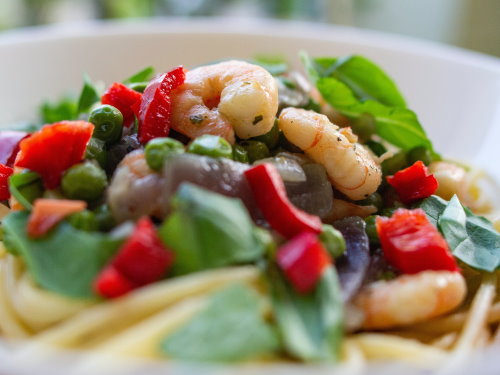Consuming a healthy diet is arguably the most important thing you can do to help you live a healthier, happier, longer life. Yet there are so many different aspects of a healthy diet. For instance, eating more nutrient-dense whole foods, keeping an eye on how much sugar and simple carbs are in your diet, and ensuring you’re eating enough protein. But proteins aren’t all created equal. To break it down further, you also want to look at complete vs. incomplete proteins.
BREAKING: Men Try This Tonight - You'll Never Need The Pill Again
Complete vs. Incomplete Proteins
Our bodies use protein to build muscle, move nutrients, repair tissue, and support a healthy metabolism. And if you don’t get enough, or if you’re not getting all of the essential amino acids, it can cause problems throughout the body.
You see, proteins are made up of chains of amino acids. The body needs 20 different amino acids for various functions throughout the body. For instance, histidine is an amino acid that helps make histamine, which is needed by the immune system. Valine is an amino acid that plays a role in muscle growth, tissue recovery, and energy. The amino acid tryptophan is needed to make serotonin in the brain to help regulate mood, appetite, and sleep.
Our bodies can make 11 different amino acids from the protein we consume, including:
- Asparagine
- Alanine
- Arginine
- Aspartic acid
- Cysteine
- Glutamic acid
- Glutamine
- Proline
- Glycine
- Tyrosine
- Serine
So, you don’t need to worry about ensuring you’re getting them from the diet. They’re called “nonessential” for this reason.
However, there are nine amino acids that the body cannot produce. Thus, you must get them from food. These include:
- Leucine
- Isoleucine
- Histidine
- Lysine
- Threonine
- Methionine
- Phenylalanine
- Valine
- Tryptophan 1
Thus, these amino acids are essential. This brings us to the definition of complete vs. incomplete proteins: complete proteins contain all of the essential amino acids. Incomplete proteins, on the other hand, contain only some of the essential amino acids.
That doesn’t mean incomplete proteins are “bad” or don’t have a place in the diet. They do. However, if you get most of your protein from incomplete sources, you’ll want to take steps to ensure you are consuming the remaining essential amino acids in your diet from other foods.
Complete Protein Foods
Some of the most common protein-rich foods do contain all of the essential amino acids. Sources include:
- Beef
- Wild game
- Fish
- Poultry
- Eggs
- Pork
- Dairy foods
- Whole soy foods like tofu, edamame, tempeh, and miso
- Most protein powders
- Quinoa
- Buckwheat
- Algae
Incomplete Protein Foods
While there are exceptions, many of the incomplete protein foods are typically vegetarian-friendly. Some quality incomplete proteins include:
- Beans, legumes, lentils
- Nuts and seeds
- Vegetables like spinach, broccoli, and mushrooms
- And whole grains.
Complete proteins may not fit into every meal, nor do they need to. You can also combine foods to create a complete protein in your meal or over the course of the day. In other words, you can mix and match incomplete protein foods (again, in the same meal or just the same day) to get the essential amino acids your body needs. For instance, consume beans with rice or whole-wheat with nut butter to get complementary proteins.
Some research, however, indicates that people who consume more incomplete proteins (such as vegans), especially if they’re older, may need to increase total daily protein to get the same advantages. According to research in Nutrition in Clinical Practice, this may be because it’s easier to digest and absorb and use complete proteins.2
TRENDING: Big Pharma In Outrage Over This Breakthrough Natural Painkiller
Experts also suggest that to optimally build muscle and strength, combining proteins in each meal may be best to ensure you’re getting all of the necessary amino acids. That doesn’t mean you need to memorize the most abundant amino acids in foods. Rather, just make sure you’re eating a variety of foods that provide a variety of amino acids.
One of the easiest ways to ensure you’re getting enough protein in the diet is to add protein powders. There are quality proteins made with whey, casein, protein blend, collagen (with added tryptophan for a complete protein), and plant-based proteins like pea, oat, quinoa, chia, and others.









